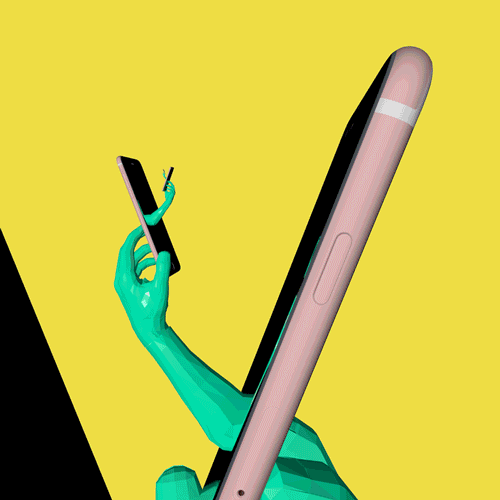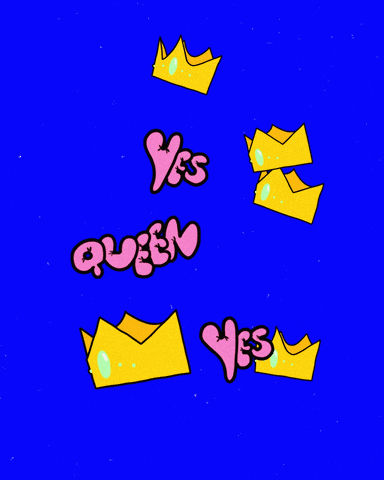DEI in public radio/TV faces some core problems
Diversity, equity and inclusion in the public media workplace, culture demands review
Since the murder of George Floyd, diversity, equity and inclusion (DEI) has been a focus in public media. From NPR to big and small stations to industry groups and conferences, DEI has been a centerpiece of the agenda. There are databases of groups leading DEI work, hiring guides and toolkits, and even public DEI models to consider.
There are many expectations for public media DEI. Positive DEI results are believed to contribute to recruitment and retention of staff; engagement with diverse audiences; and greater relevance to donors. Latino/a/e/x engagement is seen as critical in this regard. I wanted to devote some time to looking at four key topics:
How we’re performing as an industry
The vastness of the problems we’re trying to solve
The players contributing to change
The challenges facing public media DEI
The research that is emerging is helping us understand the whole gamut of issues. Public media is also getting clarity about our attitudes on where we're at as far as progress goes. Let’s look further.
The verdict so far 🧑🏽⚖️
The first question is most crucial. How do we feel about public media DEI?
Last month, Greater Public issued the findings of its DEI progress in public media survey. Its topline question was whether staff members believed there was organizational commitment to DEI. The scale was “extremely committed” to “not at all committed.” Answers fell in the “moderately committed” to “somewhat committed” range – or about the middle.
That’s not to say DEI hasn’t been demanding. Frustration and burnout are often reflected by public media staffers. This is consistent with other fields.
BTW because I wondered too, Oxford Languages defines somewhat as “to a moderate extent or by a moderate amount.” It defines moderately as “to a certain extent; quite; fairly.” Other dictionaries are just as vague.
In addition, the Greater Public review asks about individual DEI activities. The list is varied. It includes training, affinity groups, consuming media (books, podcasts), joining organizations, and participating in discussion about books and podcasts. Organizational initiatives include policies, statements, and committees. Workshops were a top action in both categories.
In addition, the inquiry essentially reveals public media is not exempt from the culture. For example, people of color and white people have long had different perceptions on affairs related to race and diversity. Also, staff and management disagree about vision in many industries.
Relatable too is the finding that staff have more confidence in their own organizations than the public media industry. Polls on American trust have traced similar routes. Respondents tend to have more faith in local government than federal, and in their communities over the system. The McKinsey survey is especially instructive. It points out confidence may be shaped by one’s geographical location as well.
The mostly-okay take within public media about DEI progress is comparable to journalism itself. Over 1,000 members of the news industry responded to the Medill poll. Like the previous research, the addition of new programs and procedures were cited by Medill respondents as positive. Like the Greater Public research, there was also some skepticism. Those in the television industry rated DEI efforts higher than those in radio/podcast, for example.
Not to say the issues, stress, et al. are great, obvs. Here’s that Greater Public table:
The issues we’re seeing 🔎
So, broadly, public media feels alright about DEI advances. Work to do, but not the worst. What exactly is the magnitude of the distress?
The lack of data is one of the biggest obstacles in understanding how deep the troubles go, and how to solve them. Consider how impactful it would be to know there were X-number of reported racial bias complaints in public media last year. Or how many cases advanced to mediation.
It's safe to say lots of people don't bother pursuing complaints for various reasons. There’s also no incentive for organizations to be transparent about incidents. Social media — see @freepublicradio and Public Media for All's anonymized accounts — has been important for stories. Still, it isn't as comprehensive as public media needs.
About a year or so ago, I started this spreadsheet to track alleged DEI incidents in public media. It is out of date, so there are omissions. It covers the following:
The organization/what it is popularly known by [so you know who we’re talking about]
Its holdings, including stations it hosts content on [so you know who they represent or are seen/heard as in different communities]
FCC public file links [so you know their donor and political disclosures]
Links to 990s or financials [so you understand their scale]
Links to articles and tweets about incidents, and dates
Many scandals never make it to a journalist, attorney, Equal Employment Opportunity Commission, or social media. Yet, it might give you a sense of the arc of scenarios. Here, there are over 70 public media DEI reports (the bulk of which occurred from 2017-2020).
The controversies tend to be in a few general categories:
Behavior allegations: words and actions by individual staff and leadership, which may have legal/actionable basis
Discrimination allegations: hostile workplace, terminations, or other institutional claims, often with legal/actionable basis
Union conflicts: Allegations related to management and unions/staff, mostly with legal/actionable basis (given labor law)
There are nuances and other topics, too. My intention is not to point anyone out. Rather, it’s to start figuring out dimensions.
First responders 🩹
We now have indications on the overall opinion of DEI in public media. Above, there is also a glimpse at the breadth of disputes. How has progress been?
Some credit must go to changes in culture. George Floyd’s killing pressed the nation to think about equity. Employees in public media became DEI first responders, stepping up in paid or volunteer capacities at their respective organizations. Likewise, many DEI consultants emerged in the public media system. Finally, outside networks were established.
Activism of staff on the ground has had the most important ramifications on DEI in public media. Nothing beats being in the (virtual and in-person) meetings, having the relationships, and knowing the layers and pain points in an organization. And I agree with my friend and DEI consultant Minal Bopaiah that organizations with their top leadership at the public media DEI table sends a message. Cementing that commitment to lower tiers remains an ongoing effort.
As I wrote in a previous newsletter, I am a signatory on Headway Training’s original letter and a former member of Public Media for All’s organizing group. Both networks attracted a relatively small group of stations, but they’re rightly lauded.
The challenges 🧩
The data indicates that most in public media have a favorable view of DEI momentum. The intention and desire to do better work is indeed inspiring. Yet the ambitious goals may need deeper discussion.
Some needs:
To be more open and avoid quasi-HR shell games. For all the remarks about transparency and accountability, public media should embrace being bold and show how far it must go rather than talking about incidents and belonging in abstract. Can we halt the managers without human resources training obfuscating?
To get from SMART to SMARTIE. Many a consultant and group will tell you DEI is more than workshops. How do we get beyond that when public media is accustomed to list-making? A SMARTIE approach to our total effort, for instance, isn’t often centered. In this respect, we need more living examples of how public media is baking in DEI to what individual organizations do.
To build up leaders. In fact, leadership development may be the next great hurdle. This includes helping executives make good on promises; sub-C-suite managers to best put in place DEI; and future leaders of color to find opportunities.
To keep DEI conversations from going Pacifica. It may be a journey to keep public media DEI focused on the present and future, and not simmer in past conflicts like Pacifica’s failed experiment. This one is probably the easiest to accomplish, though the hardening of sentiments happens faster than we realize.
To (really) know why people of color go. Speculation and conjecture have followed the departures of high-profile staffers of color at NPR (Audie Cornish, Sam Sanders, et al.). The problem is we do not have something like Carla Murphy's Leavers study active in public media, but should.
The education and nonprofit sector outside of public media may offer ideas to normalize DEI models. Inside Higher Ed last month examined DEI endeavors. Small initiatives, such as surveys; ferreting out unspoken messages in the interests of transparency; and active learning are among the recommendations. Varying project assignment and inviting students to create the curriculum are other proposals.
How do you feel public media DEI is doing today? You’re encouraged to share your thoughts.
La próxima ⌛
The next OIGO is in your inbox March 18. In the forthcoming edition, we go to the nonprofit journalism world for lessons. Chicago’s bilingual publication Cicero Independiente has been making waves for a minute. Let’s catch up with co-founder Irene Romulo about its founding, community and journalism.
-- Ernesto
Cafecito: stories to discuss ☕
Rep. Alexandria Ocasio-Cortez’s running battle with journalism fact checking continued at this week’s State of the Union. The Washington Post and others have previously criticized AOC for misleading remarks.
Define American’s Liz Robbins unveiled a sourcing toolkit created to help journalists when working with immigrant sources. Of special note, there are recommendations to help immigrants mitigate risk.
The Arab and Middle Eastern Journalists Association issued a statement on biases in the coverage of Ukraine’s armed conflict. Many of the referenced tropes will seem familiar to those seeing coverage of Latino/a/e/x immigrants and of Mexico, Central and South America.
Xavier Lopez’s Twitter thread on the WHYY mess is a thing of beauty.
Late felicidades to the 16 recipients of Latino Public Broadcasting funding. From music to history to culture, the supported films offers looks at Latino/a/e/x life. Also, felicidades a Noticias Para Inmigrantes, winner of Next Challenge for Media & Journalism funding.
El radar: try this 📡
Discover where Hispanics will make the most midterm impact. The Los Angeles Times investigates the areas and voters expected to shape November. Latinas will factor into one county in particular.
Consider how you do food journalism. The Texas Monthly’s Taco Editor José R. Ralat recently sat down to share how he approaches the work. Many of the places he visits do not show up on Google Maps; instead, they come from the community. Also, the preparation of this Mexican food staple is only half the story. The people who make the food and their journeys to make it are another big part. “I really hope that I am able to shine a light on the people who make this food and this state great. There is plenty to dislike about the state. We have a lot of our own unique problems,” he says. “But we can all come together at the table and hopefully eat tacos as a force for good to better understand ourselves.”
Ask what you can do better. The Border Chronicle celebrated its six-month anniversary by asking its readers what it should be covering. There was even a window for live listening and replying.
Build trust for bilingual partnerships. The Solutions Journalism Network shares the story of Enlace Latino NC and Southerly linking up in 2020. Regular communication and trading ideas was central to this successful collaboration.
Profile your Hispanic park ambassadors. The San Diego Union-Tribune writes about Antonio Chavez Camarillo. He was a presence at and tended to Chicano Park for more than 40 years. It has made me wonder how many other cities and towns have park stewards in Latino/a/e/x communities.
Join me this month as March’s curator of the Gather engagement journalism community. And thank you for reading.







